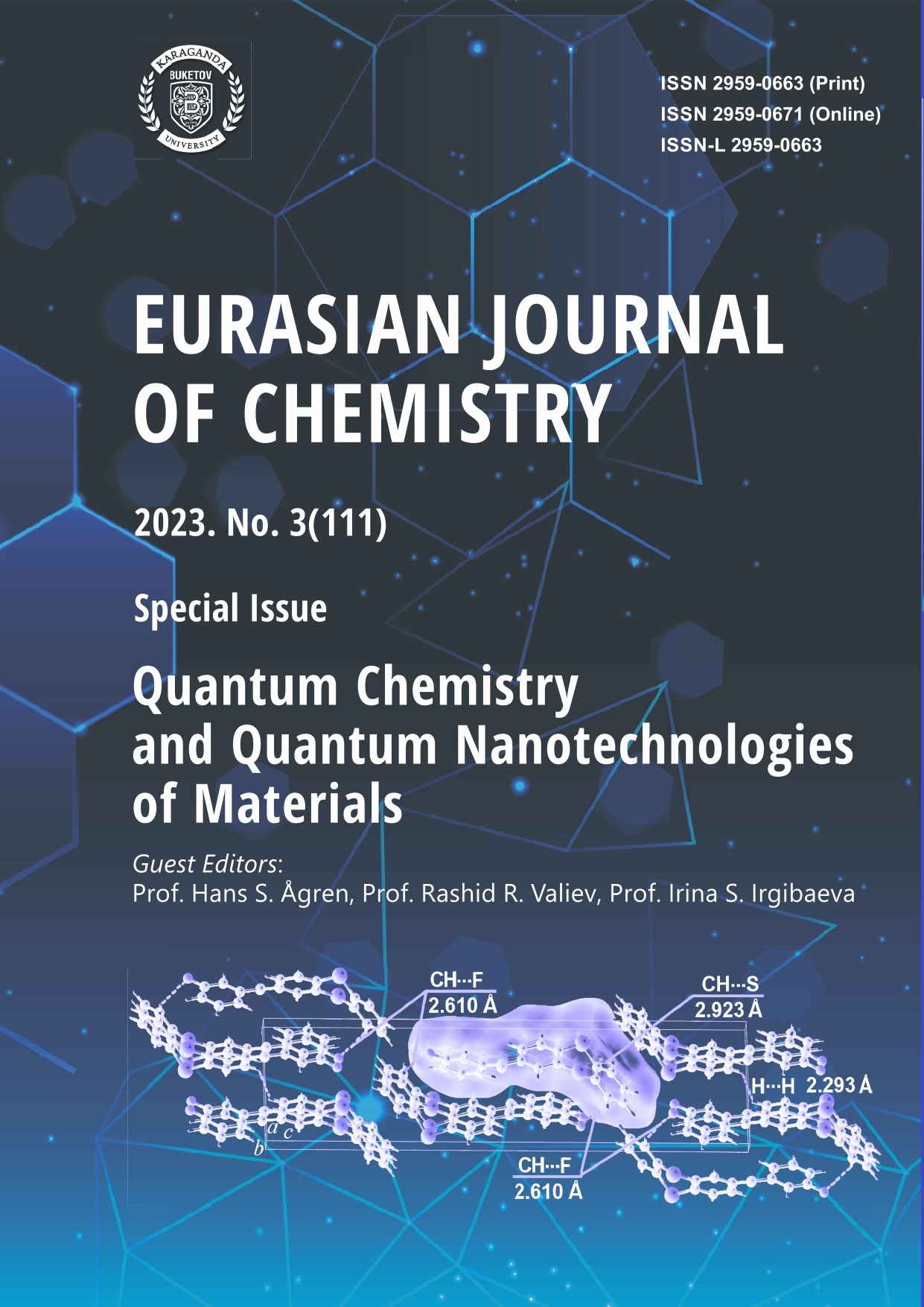TD-DFT and DFT Investigation on Electrons Transporting Efficiency of 2-Cyano-2-Pyran-4-Ylidene-Acetic Acid and 2-Cyanoprop-2-Enoic Acid as Acceptors for Thiophene-Based π-Linkers Dye-Sensitized Solar Cells
DOI:
https://doi.org/10.31489/2959-0663/3-23-9Keywords:
frontier orbitals, photoelectric properties, reactivity indices, TD-DFT, DFT, B3LYP, D-π-A type, dye-sensitized solar cells, DSSCAbstract
Great attention is being shifted to Dye-sensitized solar cells because of their structural and electronic tunability, high performance, and low cost compared to conservative photovoltaic devices. In this work, B3LYP/6-31G** level of theory was used to study the molecular architecture of the donor-π-acceptor (D-π-A) type. This architecture contains a series of dyes with the 2-cyano-2-pyran-4-ylidene-acetic acid (PLTP-dye) and 2-cyanoprop-2-enoic acid (CLTP-dye) units as acceptors; donor groups and thiophene-based π-linkers. The molecular and electronic properties, light harvesting efficiency, open circuit voltage (VOC), injection force (ΔGinject), regeneration force (ΔGregen) and excitation state lifetime () were calculated. CLTP-dyes showed lower band gap, chemical hardness (η), chemical potential (μ), higher electrophilicity (ω) and electron denoting power (ω-) than the corresponding PLTP-dyes. The ω- demonstrated that PLTP-1, PLTP-2 and PLTP-3, CLTP-1, CLTP-2 and CLTP-3 should readily push electrons to the π-linker, which can lead to high intra-molecular charge transfer and photocurrent for the dyes. The Voc and ΔGinject parameters favoured the CLTP-dyes over corresponding PLTP-dyes, and also dyes with the N,N-diphenylaniline donor have higher Voc, ΔGinject values and longer wavelengths (λmax) than the dyes with carbazole unit (N,N-diphenylaniline dyes > Carbazole dyes) in accordance with the calculated ω-, although all the dyes have good regeneration and injection abilities.
Downloads
Published
How to Cite
Issue
Section
License
This work is licensed under a Creative Commons Attribution-NonCommercial-NoDerivatives 4.0 International License.
Authors retain copyright and grant the journal right of first publication with the work simultaneously licensed under a Creative Commons Attribution License (CC BY-NC-ND 4.0) that allows others to share the work with an acknowledgement of the work's authorship and initial publication in this journal.




